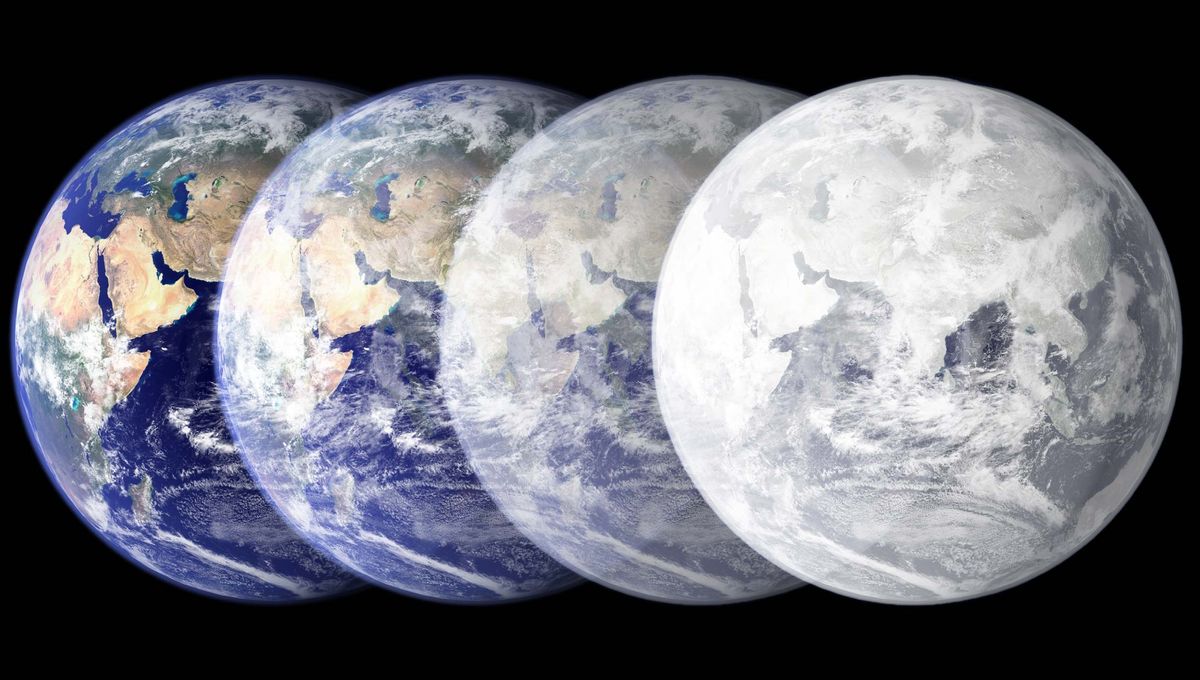
For many millions of years, our planet has experienced glacial periods followed by warmer periods. A crucial role in these changes might come from the orbital motion of our planet. By studying how our planet moves and wobbles, researchers have been able to independently reconstruct the glacial periods over the last million years and even made some predictions about the future.
ADVERTISEMENT
The idea that there is a connection between Earth’s orbit around the Sun and the fluctuation in global temperatures is five decades old, but the exact orbital parameters that come into play were not clear. The subtle changes in orbit (eccentricity), the planet’s inclination compared to the orbit (obliquity), and the change in the direction of Earth’s rotational axis (precession) were possible culprits, but exactly how they were implicated was not clear.
The work elucidates how it came to pass. Obliquity causes variation in seasonality over a 41,000-year period, which affects how much total energy the higher latitudes get in summer. Precession changes the peak of summer intensity across mid-to-high latitudes with a period of 21,000 years.
Both parameters and their interplay are important, but the changes from precession have a stronger influence on the beginning of the thawing period, while obliquity’s changes affect the peak of the interglacial period – the time between two ice ages – and when a new ice age begins.
“We found a predictable pattern over the past million years for the timing of when Earth’s climate changes between glacial ‘ice ages’ and mild warm periods like today, called interglacials,” co-author Lorraine Lisiecki, a professor from the University of California Santa Barbara, said in a statement.
“We were amazed to find such a clear imprint of the different orbital parameters on the climate record,” added lead author Stephen Barker, a professor at Cardiff University. “It is quite hard to believe that the pattern has not been seen before.”
ADVERTISEMENT
The team compared the changes in orbital parameters to the glacial periods over the last 900,000 years. Eccentricity varies over 100,000-year cycles (and a second one over 400,000 years). They found a repeating pattern consistent with the orbital changes.
“The pattern we found is so reproducible that we were able to make an accurate prediction of when each interglacial period of the past million years or so would occur and how long each would last,” Barker said. “This is important because it confirms the natural climate change cycles we observe on Earth over tens of thousands of years are largely predictable and not random or chaotic.”
The observations can help create a unified theory of the occurrence of glacial and interglacial periods on Earth. And it could also be useful to predict the future. Based on the orbital parameters, if humans had not altered the climate so dramatically, the next ice age would be in about 10,000 years.
ADVERTISEMENT
“And because we are now living in an interglacial period – called the Holocene – we are also able to provide an initial prediction of when our climate might return to a glacial state,” said co-author Chronis Tzedakis, a professor at University College London.
“But such a transition to a glacial state in 10,000 years’ time is very unlikely to happen because human emissions of carbon dioxide into the atmosphere have already diverted the climate from its natural course, with longer-term impacts into the future,” added co-author Gregor Knorr from the Alfred Wegener Institute, Helmholtz Centre for Polar and Marine Research.
The team hopes to construct a long-term baseline model for the Earth’s climate that could be used together with short-term climate models looking at the impacts of human activity over the last 150 years.
“Now we know that climate is largely predictable over these long timescales, we can actually use past changes to inform us about what could happen in the future,” Barker added. “This is something we couldn’t do before with the level of confidence that our new analysis provides.”
ADVERTISEMENT
“This is vital for better informing the decisions we make now about greenhouse gas emissions, which will determine future climate changes.”
A paper describing these fascinating results is published in the journal Science.
Source Link: Next Ice Age Should Be 10,000 Years Away – But Humans May Disrupt That